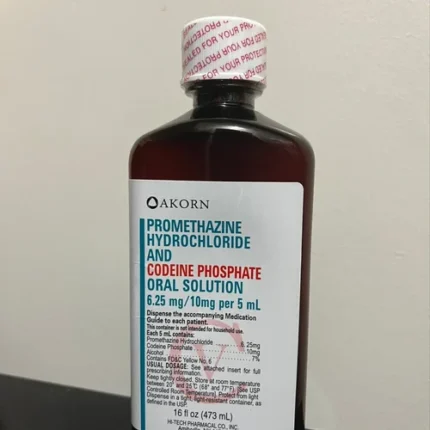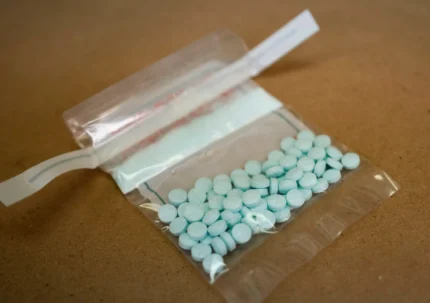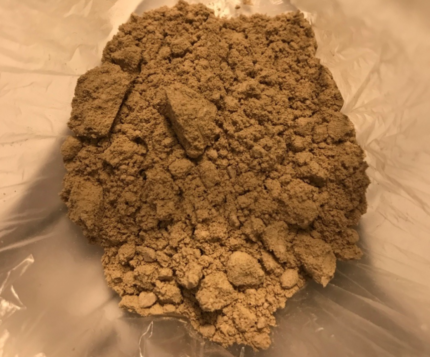Actavis Promethazine (473ml)
Akorn-cough-syrup
Fentanyl
Fentanyl 50 microgram/ml Injection
Fentanyl pills
Heroin
Heroin Hcl
Opioids are a class of powerful substances used to treat pain, but they also represent one of the most pressing public health challenges in many parts of the world. The term "opioid" refers to natural, semi-synthetic, and synthetic compounds that bind to specific receptors in the brain and body and often provide significant pain relief. However, their effectiveness in treating pain comes with many risks; most notably addiction, overdose, and the long-term societal impacts of widespread abuse.
What are opioids? Opioids are drugs derived from the opium poppy plant or synthetically manufactured to mimic the effects of natural opiates such as morphine and codeine. They can be categorized as follows:
Natural opioids: derived directly from the opium plant (morphine, codeine, etc.).
Semi-synthetic opioids: made by modifying natural opioids (oxycodone, hydrocodone, etc.).
Synthetic opioids: fully synthetic substances that do not come from the opium plant but mimic its effects (e.g. fentanyl, methadone, tramadol).
The best known opioids include morphine, heroin, oxycodone, fentanyl, and hydrocodone. These drugs are typically prescribed for acute pain, recovery from surgery, treating chronic pain, or as part of a cancer treatment plan. Role of Opioids in Pain Management
In the medical setting, opioids play an important role in pain management, especially after surgery and in the treatment of serious injuries, cancer, and terminal illnesses. Opioids are effective painkillers because they work by binding to receptors in the brain, spinal cord, and other parts of the body, reducing the perception of pain. When used in prescribed doses under the supervision of a doctor, opioids can provide significant relief to patients with severe pain.
However, the benefits of opioid use must be balanced with the understanding that prolonged or excessive use can lead to tolerance (the same dose becomes less effective), dependence (the body needs the drug to function properly), and addiction (people compulsively seek out and use the drug despite the negative effects).
The Opioid Crisis: An Addiction Epidemic
The opioid crisis is one of the greatest public health challenges facing the world today. While opioids are invaluable for legitimate medical purposes, their abuse, especially prescription opioids, has led to widespread addiction and overdose deaths.
How did the crisis come about? Several factors play a role in the opioid crisis.
Overprescription: In the 1990s and early 2000s, pharmaceutical companies aggressively marketed prescription opioids, reassuring doctors that these drugs were not addictive for pain management. As a result, doctors began prescribing them more frequently, leading to increased availability.
Switching to illegal drugs: As opioid prescriptions became more regulated and harder to obtain, many prescription opioid addicts turned to illegal opioids such as heroin or synthetic opioids such as fentanyl, which are more powerful and cheaper. Fentanyl and Overdose Deaths: Fentanyl, a synthetic opioid 50-100 times more potent than morphine, is at the center of the crisis. Many overdose deaths in recent years have been linked to fentanyl, which is often mixed with heroin and other street drugs, causing accidental overdoses.
The opioid epidemic has had a devastating impact on individuals, families, and communities. According to the Centers for Disease Control and Prevention (CDC), more than 80,000 people died from drug overdoses in the United States in 2021, with the majority of those deaths attributable to opioids. In addition to the tragic loss of life, the epidemic has caused increased health care costs, crime, reduced productivity, and strain on families and social services. Effects of Opioids on the Brain and Body
Opioids work by binding to certain receptors (called opioid receptors) in the brain and spinal cord. When opioids bind to these receptors, they decrease the perception of pain and release dopamine (the brain's "feel good" chemical), creating a feeling of euphoria. However, with repeated use, the body develops a tolerance to opioids, so higher doses are needed to achieve the same effect.
The physical effects of opioids include:
Euphoria and analgesia (the desired effect)
Drowsiness or sedation
Respiratory depression (a slowing of breathing rate, which can be fatal at high doses)
Constipation (a common side effect)
Nausea and vomiting
Regular use can lead to physical dependence over time. That is, the body becomes dependent on the drug to avoid withdrawal symptoms such as anxiety, muscle pain, sweating, and nausea. Addiction, the psychological compulsion to use the substance despite negative consequences, is another complication of long-term opioid use. Addressing the Opioid Crisis: Solutions and Recovery
The opioid epidemic requires a multi-pronged approach to reduce harm, treat addiction, and support recovery.
Prescription Monitoring: Efforts to limit overprescribing, including prescription drug monitoring programs (PDMPs), aim to track prescriptions and prevent "doctor jumping."
Medication-Assisted Treatment (MAT): MAT combines medications such as methadone, buprenorphine, and naltrexone with counseling and therapy to help people recover from opioid addiction. MAT has been proven to reduce cravings and prevent withdrawal symptoms.
Naloxone (Narcan): This life-saving medication can reverse the effects of an opioid overdose and is increasingly being taken by first responders, health care providers, and even ordinary people in areas at risk for overdose.
Public Education and Awareness: There is a growing call for more education about the risks of opioids, how to safely dispose of unused medication, and how to recognize the signs of addiction.
Harm reduction strategies: Programs such as syringe exchange initiatives and supervised consumption sites aim to reduce the health risks associated with opioid use, including the spread of infectious diseases and fatal overdoses. Mental Health and Social Support: Because addiction is often accompanied by mental health disorders, integrated treatment of both disorders is essential. Support systems such as family counseling, peer groups, and sober living communities are also essential for long-term recovery.
The opioid crisis is a complex and deep-rooted problem that affects millions of people around the world. There are no easy solutions, but continued public health efforts, policies, medical practices, and community support are helping to contain the crisis. By combining education, treatment, harm reduction, and legislative efforts, we can work to reduce opioid abuse and support people on the path to recovery.







